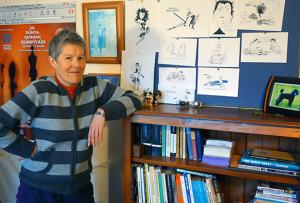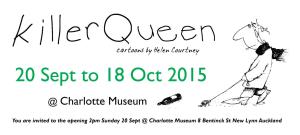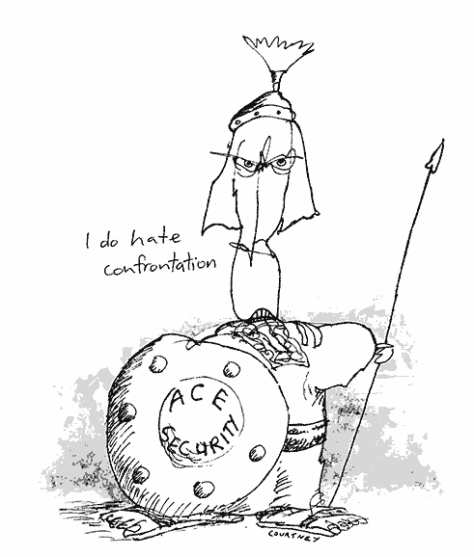Here's a preview of Three Words, available for pre-orders soon, courtesy of our brilliant publishers, Beatnik!
We can barely contain our excitement, so we don't expect you to! Spread the word!
Tuesday, October 27, 2015
Friday, October 23, 2015
pride and prejudice: comics as colonialism in aotearoa
[1] A map of Port Macquarie (Bluff Harbour) was drawn by Robert
Williams in 1813, when exploring the southern coast for seals, timber and flax,
the same year Jane Austen published Pride and Prejudice. File Print: From Cartographic Collection
Description: Port Macquarie, Foveaux's Straits. Shows boats' tracks and land tracks from Robert Williams' survey of hemp fields in the Perseverance.
Physical Description: Map 53 x 73 cm
Date: [1813]
Reference Number: MapColl-835at/[1813]/Acc.425
Alexander Turnbull Library, Wellington, N.Z.
Description: Port Macquarie, Foveaux's Straits. Shows boats' tracks and land tracks from Robert Williams' survey of hemp fields in the Perseverance.
Physical Description: Map 53 x 73 cm
Date: [1813]
Reference Number: MapColl-835at/[1813]/Acc.425
Alexander Turnbull Library, Wellington, N.Z.
[2] I have dyscalculia.
[3] I was taught at school
that the way my family spoke was not proper English. We were made to feel
ashamed of both our accent and our dialect. These attitudes are pervasive and
it is still a common misconception that RP and Standard English are “correct” English,
when in fact they are merely one other variant.
http://www.bbc.co.uk/voices/yourvoice/language_rules_comments2.shtml
[4] http://www.theguardian.com/commentisfree/2015/jul/22/orgreave-truth-police-miners-strike
[5] My feeling is that I can use my European heritage to dismantle the
power structure of Comics as they are currently defined but that I must not
present alternatives as that would be no better, it’s not my place; that would
be disrespectful.
[6] “It is a truth
universally acknowledged, that a single man in possession of a good fortune,
must be in want of a wife.” Jane Austen, Pride and Prejudice, 1992, p4. See
Endnote vi.
[7] The term Comics is a powerful one, which is why I’ve capitalised it
here. Originating in Europe, it is a term that has been defined and re-defined
by Westerners, predominantly white heterosexual middle-class men, and has been
reproduced wholesale in Aotearoa with scant consideration of how this change of
context affects the narratives used to talk about the genre.
[8] Adrian Kinnaird, From Earth’s End, 2013, p6; p12.
[9] http://www.nationalgeographic.com/trajan-column/; Sabin, 1996, p11.
[10] http://www.comic-art.com/history/history0.htm.
[11] http://comicpusher.blogspot.co.nz/2013/08/BayeuxTapestry.html;
McCloud, 1994, p12 - 13; Perry, 1971, p11; Sabin, ibid.
[12] 1813 novel about gender and class divisions.
[13] Cunningham, 1992, vi.
[14] Little has changed in
two hundred years.
[15] Dr Tim Bollinger wrote the introduction to New Zealand Comics and Graphic Novels, Hicksville Press, 2012.
[16] Kinnaird, ibid.
[17] Bollinger, ibid, p2.
[18] Kinnaird, p9.
[19] An exception is Hilary Chute, who, although referencing Scott
McCloud and others, works from Art Spiegelman’s Comics definition on
representations of space and time. Graphic
women: Life, Narrative and Contemporary Comics, Columbia, 2010, p7.
[20] Sabin, ibid.
[21] Scott McCloud, Understanding
Comics, Harper Collins, 1994.
[22] George Perry and Alan Aldridge wrote the earliest Comics history I
was able to locate in time for this essay’s publication, published by Penguin
in 1967 then revised in 1971.
[23] James Chapman, British Comics: A Cultural History,
Reaktion Books, 2011, p14.
[24] “A good map tells a
multitude of little white lies; it supresses truth to help the user see what
needs to be seen.” Mark Monmonier, How to
Lie with Maps, University of Chicago Press, 2nd Edition, 1996,
p25.
[25] “A French term for a
kind, a literary type or class.” J. A. Cuddon (Revised by C. E. Preston), Dictionary of Literary Terms & Literary
Theory, Penguin, 1998, p342.
[26] Chapman, ibid.
[27] Ibid.
[28] Text, sequencing, and narrative.
[29] The artists’ statement read: “before them, Māori women had little
or no presence in the contemporary NZ art world.”
[30] Robyn was born a decade earlier than Emily Karaka and Shona Rapiri
Davies.
[31] https://www.youtube.com/watch?v=uhznUzwf2qI,
last accessed 30/9/15.
[32] https://www.youtube.com/watch?v=Auv-B_0iaUQ,
last accessed 30/9/15.
[33] “Manga, referring specifically to a particular form of comics
created in Japan […], is a genre born out of the synthesizing or union of the
Japanese traditional folk arts and the Western visual arts. Japanese Manga has
its generic roots in the historical art traditions in Japanese culture, which
could be traced back as far as to the caricatures of people and animals carved
on the planks of the Horyuji Temple, built originally in 607AD.” Huang, Minwen.
“The Alchemical Imaginary of Homunculi in Fullmetal Alchemist”, p49, published
in Transitions and Dissolving Boundaries
in the Fantastic, Edited by Christine Lötscher, Petra Schrackmann, Ingrid
Tomkowiak, Aleta-Amirée von Holze.
[34] Tapa, made from the bark of the paper mulberry tree, was brought to
Aotearoa with the first Māori settlers from other parts of Polynesia and, earlier still, Taiwan. The indigenous
Taiwanese were themselves migrants from Southern China, where paper, in the
form of tapa, was probably invented.
Paper mulberry is what is known as a
“pioneer species” due to its being one of the first plants to colonise damaged
ecologies. Maggy Wassilieff. 'Forest succession and regeneration', Te Ara - the
Encyclopedia of New Zealand, updated 9-Nov-12; URL: http://www.TeAra.govt.nz/en/forest-succession-and-regeneration
Roger Neich and Mick Pendergrast, Tapa
of the Pacific, David Bateman in association with Te Papa Whakahiku/Auckland
Museum, 2001, p3;
http://www.thebigidea.co.nz/connect/media-releases/2014/aug/144819-elam-and-maori-studies-student-to-research-tapa
Therese Weber, The Language of Paper:
a History of 2000 Years, Orchid Press, 2007, p17.
Tangata Whenua: An Illustrated
History, Atholl Anderson, Judith Binney, Aroha Harris, Bridget Williams Books,
2014.
Ewins, Rod. "Barkcloth and the
Origins of Paper." Conference Papers of the First National Paper
Conference. Hobart: Papermakers of Australia. 1987.
The invention of paper-making was, of
course, a continuing process rather than a single event […] the discovery of
the suitability of the paper mulberry (Brousonetia papyriJera) was certainly
significant. It is a plant that is native to China, though it has been
cultivated extensively in many other temperate and tropical zones throughout
the world. Its bark, after being beaten into a cloth, was used for clothing in
China as well as in other regions along the equator, and ancient Chinese
literature provides evidence that it was manufactured and traded by native
tribes in the southern part of China, as we shall see. The invention of
paper-making with tree bark attributed to Tshai Lun in the early + 2nd century
was possibly influenced by the acquaintance of the people in his area with the
paper mulberry. Tshai Lun was a native of Lei-yang in what is now Hunan province,
and it was here that the bark was made into cloth by beating and then into bark
paper after maceration. Since, then, the maceration process of turning rags
into pulp was already known in China, it was very likely that the people in the
south of the country were the first to convert paper mulberry bark into a pulp
for papermaking.
Neither paper mulberry nor bark cloth
was, it seems, used in Europe, where its cultivation appears to have been
unknown, even in the + 18th century; indeed among the numerous kinds of plant
tested for paper-making by European scientists at this time, paper mulberry was
not included. Science and Civilization in China: Volume 5, Chemistry and
Chemical Technology, Cambridge University Press; Tsien Tsuen-Hsuin, PH. D. Part
I: Paper and Printing, p4.
The Chinese used the bark of their
native paper mulberry tree to make tha pu or ku pu, which may have some
affinity with tapa […] it has been called bark cloth instead of paper. The
Chinese terms tha pu which may mean ‘beaten cloth’, and ku pu, ‘paper-mulberry
cloth’, very probably referred to a sort of bark cloth or tapa […] people South
of the Yangtze River used the bark of ku (paper-mulberry) to make cloth and
also pounded it to make paper, called ku phi ehih4 (paper-mulberry bark paper).
Apparently, the inner bark of paper-mulberry can be prepared in different ways
and used for different purposes. Since all these items for wearing and bedding
are described in Chinese records as made of ehih (paper), we may assume that
they were made of bark paper.” Ibid, p 110. Ewins, ibid.
[35] http://www.aucklandcity.govt.nz/dbtw-wpd/virt-exhib/TapaCloth/essay.htm
[36] Errington, ibid.
[37] “The weight of antiquity continues to dominate cultural production
in much of the post-colonial world”, The Empire Writes Back, 2005, p7.
[38] The consensus of definition within Aotearoa’s Comics literature
adheres with “the fixing of texts in historical time and the perpetual search
for the determinants of a single, unified, and agreed meaning” that Ashcroft et
al, ibid, posit as features of a Western thought approach utilised in
colonization.
[39] The Empire Writes Back, 2005,
p3.
[40] Bayly, The Birth of the Modern World, 1780 – 1914, Blackwell, 2004, p473.
[41] The Empire Writes Back, ibid.
[42] Bayly, Ibid.
[43] Spivak, Gayatri Chakravorty. "Can the subaltern speak?."
(1988).
[44] “When it comes to the
tricky question of colonial identities […] the fact that Europe and its
colonized others were co-produced in and through their unequal interactions
means that, through making these others the objects of its action, Europe
constructed itself as subject. From the Enlightenment on, this subjectivity
took the form of a universal taken-for-grantedness whereby the European norm
was held to reflect the natural order, with the result that difference or
divergence from that norm came to be stigmatized as defective, degraded or
pathological. Backed up by the awesome power of Western military and
technological achievements, this ethnocentric view was very persuasive – to the
extent that it could infect the self-esteem of colonized people themselves. To
resist this kind of power, and its continuing legacy of Western racism, it is
necessary to denaturalise the Western world-view, to show how certain ideals
that it holds out as universal are actually products of the West’s own
particular historical and cultural experience.” Patrick Wolfe, “The World of
History and the World-As-History: Twentieth-century Theories of Imperialism”,
p112 – 113, Decolonization: Perspectives
from Now and Then, Ed, Prasenjit Duara, Routledge, 2004.
[45] Spivak, ibid.
[46] Barringer and Flynn,
Colonialism and the Object: Empire, Material Culture and the Museum, 1998,
p3.
[47] “Comics have not yet
arrived in the way that films and television have, accepted as a rational
amusement for adults and a proper subject for academic study. Comics are still
liable to be dismissed wholesale as trash, appropriate for weak or
underdeveloped minds, and probably detrimental. Curiously enough, much the same
was said of the drama in Shakespeare’s day and of the novel in Jane Austen’s
time.” Paul Dawson, “The Comics Come of Age”, The Times Higher Educational
Supplement (23 December 1988), p14.
[48] Kinnaird, p7.
[49] Bollinger, 1993, p2.
[50] Overland, # 218, “Hackers, Gamers and Cyborgs”, Brendan Keogh, p21.
[51] And, in the case of Aotearoa Comics history, Māori.
[52] Ibid, p20.
[53] Ibid, p21.
Wednesday, October 21, 2015
in profile: helen courtney


Helen Courtney (Ngati Toa Rangatira, Ngati Raukawa ki te Tonga, Te Ati Awa) grew up in West Auckland and now lives in Hamilton. She drew regularly for Broadsheet and has illustrated books by Pat Rosier and other authors. Her cartoons, including colour work and black ink cartoons from Broadsheet magazine in the 1980s, have been exhibited at the Charlotte Museum.

Her cartoons are mounted Gliceé prints on art paper available for around $75 with profits going to the Charlotte Museum. Most of Helen’s Broadsheet originals are held in the Turnbull Library Cartoon Collection.
Jenny R https://lesbianaotearoa.wordpress.com/news/mahuru-september/#kill
Wednesday, October 7, 2015
in profile: the rabbid
The Rabbid is an enigma. No one is quite sure who The Rabbid is or where they are. But their comics will appear in Three Words. Until then, they can be found at Inflated Mythmaking.
Subscribe to:
Posts (Atom)
